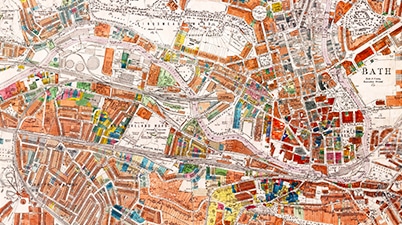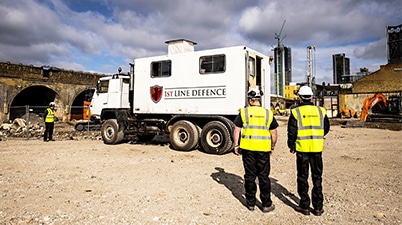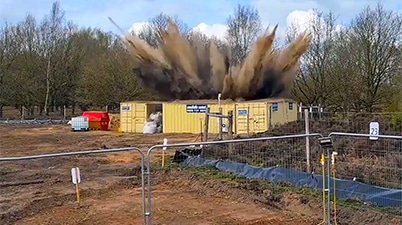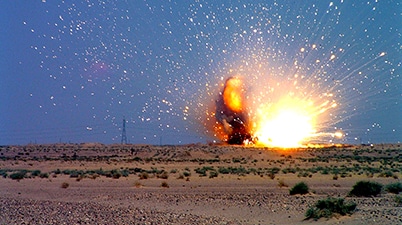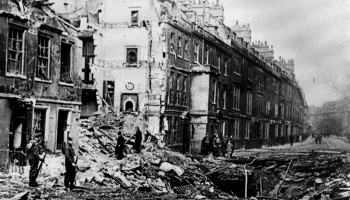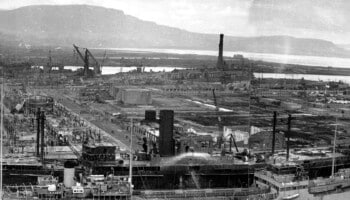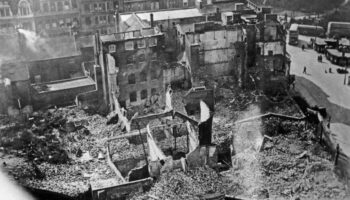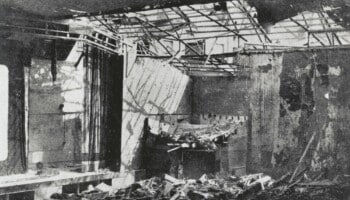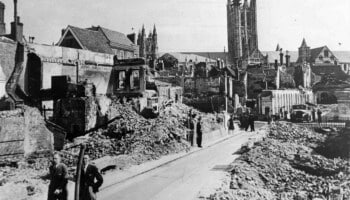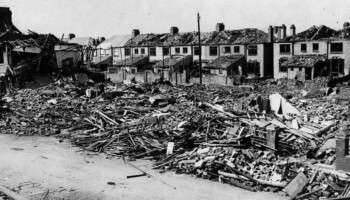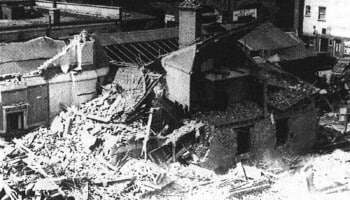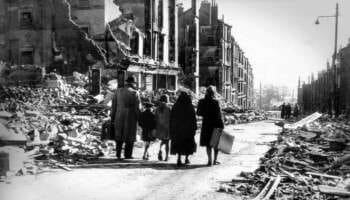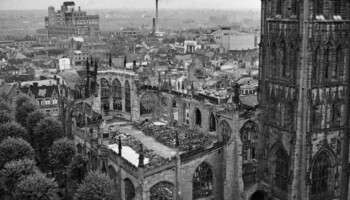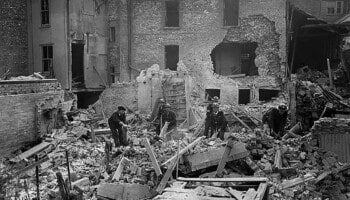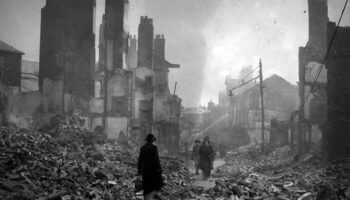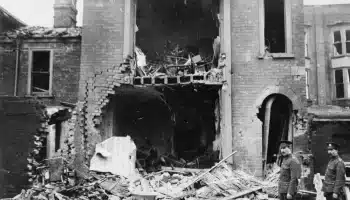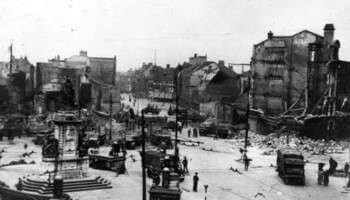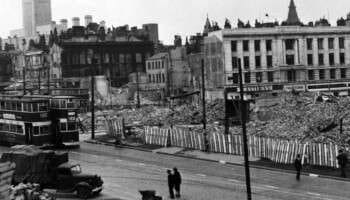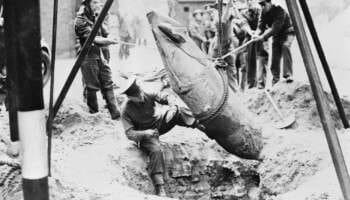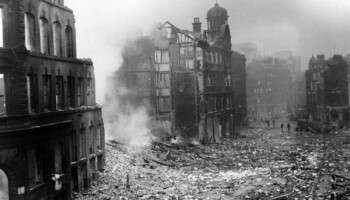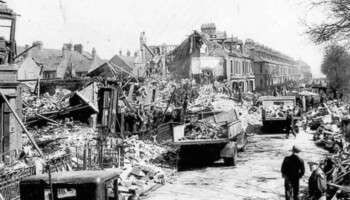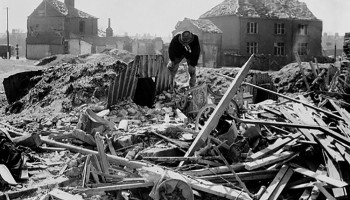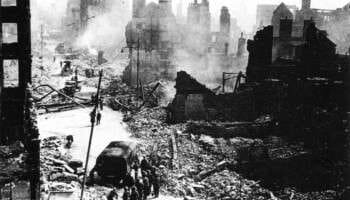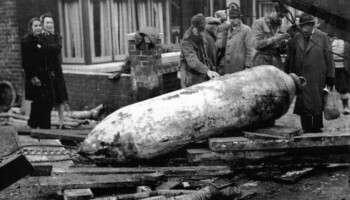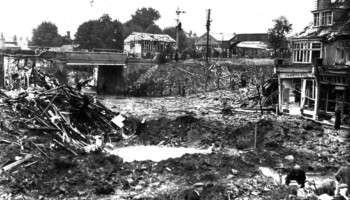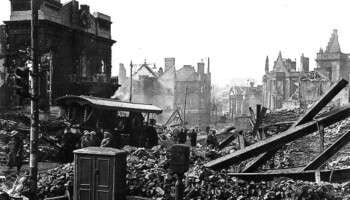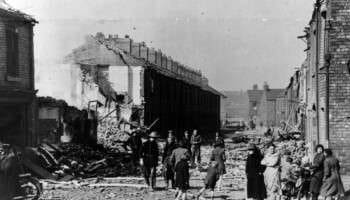Home » Resources » UXO City Guides »
UXO City Guide
Home Office Bombing Statistics for Nottingham
Record of German Ordnance dropped on the County Borough of Nottingham
High Explosive Bombs (All types)
422
Parachute Mines
0
Oil Bombs
3
Phosphorus Bombs
0
Fire Pots
0
Pilotless Aircraft (V-1)
0
Long-range Rocket Bombs (V-2)
0
Weapons Total
425
Area Acreage
16,172
Number of items per 1,000 acres
26.3
Why was Nottingham targeted and bombed in WWII?
Nottingham was not among the most heavily bombed cities in the UK during WWII. It was for the most part spared during Nazi Germany’s nine month ‘Blitz’ of London and other British cities. Only one raid of significance occurred during this time – an isolated incident on the 15th January 1941 which killed 15 people.
However, Nottingham did famously produce various military materiel such as boots, textiles, weapons and other supplies, making it important to the British war effort, and therefore not entirely out of the Luftwaffe’s sights.
It saw its largest raid on the night of 8-9th May 1941. Incendiary and high-explosive bombs were dropped across the city, resulting in substantial damage to infrastructure and housing.
Nottingham’s ‘Blitz’ of 9th May 1941
Starting shortly after midnight, and finishing at around 4:30am, Nottingham was subjected to 11 separate raids1. Targets included the Basford Gas Works, Boots, the National Ordnance Factory on Castle Meadow Road, Chilwell Ordnance Depot, the factories of Raleigh and Players, Wilford Power Station and the Lady Bay Bridge2.
An example of one of many pre-war German military target/reconnaissance maps is presented below.
Over 400 high explosive bombs were dropped, in additional to countless incendiaries. At least 200 people were killed, with over 270 injured. A total of 200 houses were destroyed, and more than 4,500 damaged3.
One eyewitness recalled “The sky was red – as though the world had come to an end … The dust was just like a sandstorm. Buildings were ablaze, water pipes were gushing and there were mounds of brick and rubble everywhere.”
Below is an extract of a bomb map showing the locations of bomb strikes in Nottingham, held at Nottingham Central Library. HE bombs are shown as large black dots and depict the presence of bombing around the Lower Parliament Street area.
The Lace Market reportedly became an inferno. Boots factories in Poplar, Island and Station Streets were seriously damaged. Trent Bridge Cricket Ground and both Forest and County football stadiums were hit. St John’s Church, Leenside was destroyed; the tower of St Mary’s Nottingham caught fire, nearby St Christopher’s was reduced to a shell. The old Moot Hall on Friar Lane, the Masonic Hall on Goldsmith Street, sections of University College and Shakespeare Street’s Register Office were damaged4.
The raid cut swathes through the districts of Stapleford, Beeston, Mapperley Park, Woodborough Road, St Ann’s and West Bridgford. However, it was the areas of Sneinton and the Meadows which sustained the worst damage, with sections of London Road, Colwick Road and Carlton Road totally destroyed.
‘It could have been worse’ – the success of Nottingham’s Bombing Decoy Sites
As bad as the raid was, it is thought the damage could have been considerably worse without the ‘Starfish’ decoy site at nearby Cropwell Butler, 8km south-east of Nottingham (see image below). Starfish sites were large-scale night-time decoys created during the Blitz to simulate burning British cities and towns. The aim was to divert Luftwaffe night bombers from their intended targets so they would drop their ordnance over the surrounding countryside.
The first wave of bombers would often drop incendiary bombs to ‘light up’ the target area for subsequent bombers. The decoy sites would mimic a burning town, and subsequent waves of aircraft would hopefully mistake that for the primary target, bombing it instead.
It is reported that many bombs destined for the centre of Nottingham fell on the Cropwell Butler decoy and in fields the Vale of Belvoir.
Nottingham was not subject to any more raids of such a scale, although further raids occurred over the city sporadically, mainly as a result of poor Luftwaffe navigation.
Home Office Bombing Statistics for Nottingham
Details obtained from the official Home Office bombing statistics, indicates the quantity and type of bombs that fell on the County Borough of Nottingham during WWII (excluding incendiary bombs). A total of 425 recorded bombs were recorded, equating to 26.3 items of ordnance per 1,000 acres.
Can UXO still pose a risk to construction projects in Nottingham?
The primary potential risk from UXO in Nottingham is from items of German air-delivered ordnance which failed to function as designed. Approximately 10% of munitions deployed during WWII failed to detonate, and whilst efforts were made during, and after the war to locate and make UXBs safe, not all items were discovered. This is evidenced by the regular, on-going discoveries of UXO during construction-related intrusive ground works across the UK – not just in Nottingham.
Occasionally items of British explosive ordnance are also encountered within inner city areas, including Nottingham. In Nottingham’s case, the city was defended by several static AA batteries. These AA batteries would have been in constant action during these raids, and as such a volume of AA shells would have been fired over Nottingham’s skies, some of which may not have functioned as intended.
I am about to start a project in Nottingham, what should I do?
Developers and ground workers should consider this potential before intrusive works are planned, through either a Preliminary UXO Risk Assessment or Detailed UXO Risk Assessment. This is the first stage in our UXO risk mitigation strategy and should be undertaken as early in a project lifecycle as possible in accordance with CIRIA C681 guidelines
It is important that where a viable risk is identified, it is effectively and appropriately mitigated to reduce the risk to as low as reasonably practicable (ALARP). However, it is equally important that UXO risk mitigation measures are not implemented when they are not needed.
While there is certainly potential to encounter UXO during construction projects in Nottingham, it does not mean that UXO will pose a risk to all projects. Just because a site is located in Nottingham does not mean there is automatically a ‘high’ risk of encountering UXO. It really does depend on the specific location of the site being developed.
A well-researched UXO Risk Assessment will take into account location specific factors – was the actual site footprint affected by bombing, what damage was sustained, what was the site used for, how much would it have been accessed, what were the ground conditions present etc.
It should also consider what has happened post-war – how much development has occurred, to what depths have excavations taken place and so on. This will allow an assessment of the likelihood that UXO could have fallen on site, gone unnoticed and potentially still remain in situ.
Recent UXO discoveries in Nottingham
Since the war, many items of UXO have been discovered across multiple cities within the UK, with Nottingham no exception. See the news articles below about UXO incidents and discoveries from national and local press in Nottingham.
1st Line Defence keep up-to-date with relevant and noteworthy UXO-related news stories reported across the UK, and you can browse through these articles using the buttons below.
Get UXO risk mitigation services from a partner you can trust
UXO City Guides
Got a project in Nottingham? Need advice but not sure where to start?
If you need general advice about UXO risk mitigation in Nottingham, get in touch.
Contact Us
* indicates required fields
